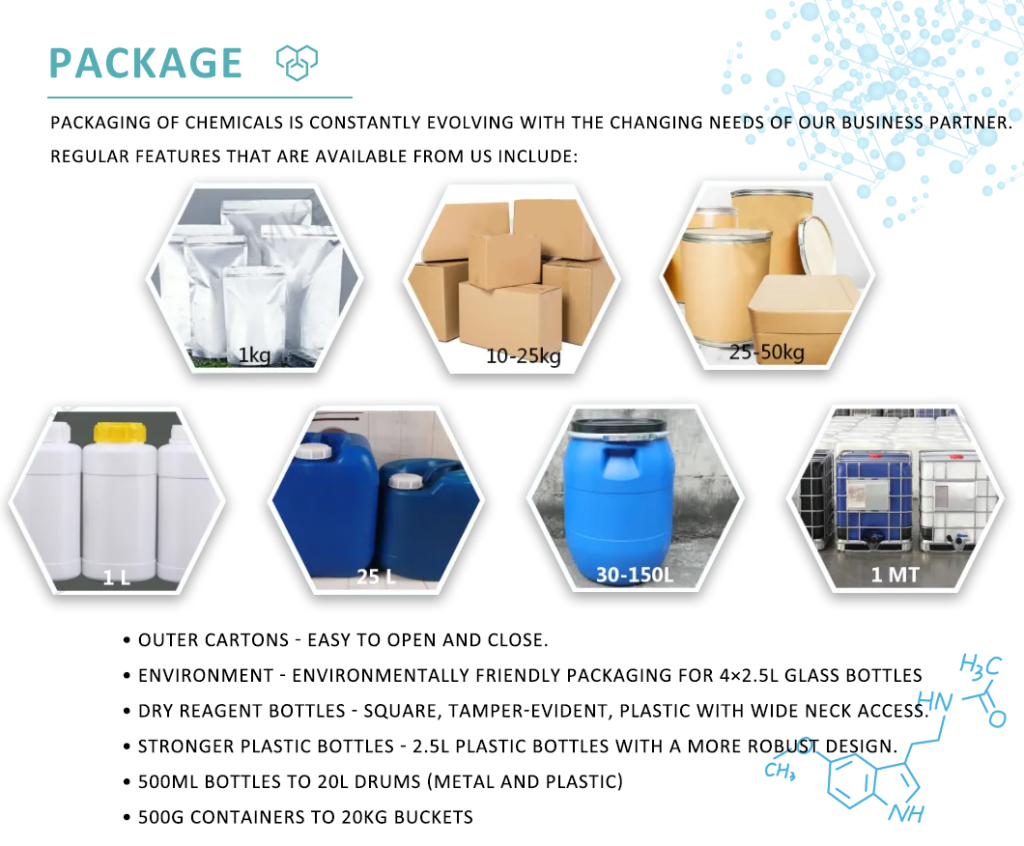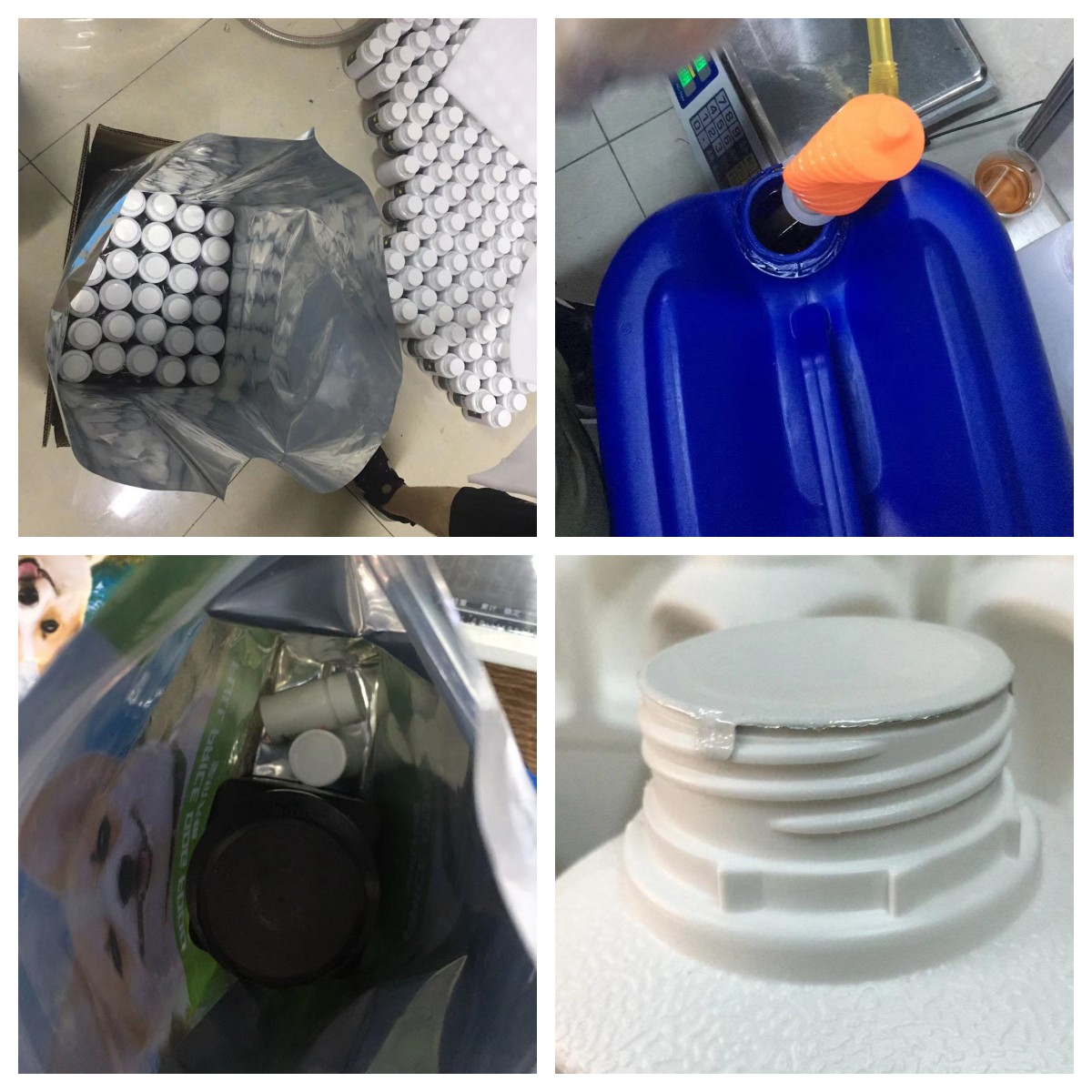BDO 1,4-Butanediol CAS 110-63-4
Australia,new Zealand,USA,Canada 100% Safe Delivery
Product information:
| Product Name | 1,4-Butanediol |
| Synonyms: | (2E)-2-Butene-1,4-diol;2-Butene-1,4-diol;EINECS 228-085-1;2-Butene-1,4-diol, (2E)-;MFCD00002924;(2E)-But-2-en-1,4-diol;trans-2-Butene-1,4-diol;1,4-Dihydroxy-2-butene;2-Butene-1,4-Diol(cis- and trans- mixture);2-Butene-1,4-diol, (E)-;(2E)-But-2-ene-1,4-diol |
| CAS NO: | 110-63-4 |
| EINECS: | 203-787-0 |
| Molecular Formula: | C4H8O2 |
| Molecular Weight: | 88.11 |
| Melting Point: | 4-10 °C(lit.) |
| Boiling Point: | 235 °C(lit.) |
| Density: | 1.07 g/mL at 25 °C(lit.) |
| Appearance: | Transparent to pale yellow liquid |
| Storage: | This product should be kept sealed. The product is packed in a brown glass bottle and protected by a wooden case. |
| Stability: | 1. Flammable liquid with strong hygroscopicity. 2. Non-corrosive, low toxicity. But it is irritating to the skin and mucous membranes. |
| Applications: | 1. It can be used as plasticizer for alkyd resin, cross-linking agent for synthetic resin, bactericide, etc. It can also be used to make 1,4-butanediol, etc. 2. 1,4-butenediol is a kind of pesticide and pharmaceutical intermediate, which is used for the synthesis of endosulfan alcohol, the intermediate of organochlorine insecticide endosulfan. 3. Mainly used as an intermediate for the preparation of pesticides, agricultural chemicals and vitamin B6, and a small amount for polymer production. |
What is 1,4-butanediol?
1,4-Butanediol (1,4-B, butylene glycol, or BDO) is a thick, colorless liquid that is nearly odorless with a distinct bitter taste. 1,4-Butanediol is used industrially as a solvent and in the manufacture of some types of plastics, elastic fibers, and polyurethanes. Inorganic chemistry, 1,4-butanediol is used for the synthesis of γ-butyrolactone
In humans, it acts as a depressant and a prodrug for GHB where 1ml is equivalent to 1g of GHB. It is used as a recreational intoxicant with effects similar to alcohol.
1,4-Butanediol, as well as, will dissolve most types of plastic over time. For this reason, it is recommended to only transport and store the drug using a glass container, standard gelatin capsules (not vegetarian), or high-density polyethylene plastic (also known as #2 recycled plastic). To check the type of plastic used on a bottle, one can look at the bottom for a number in the triangle-shaped recycling label.
What is 1,4-butanediol uses?
1,4-Butanediol is used industrially as a solvent and in the manufacture of some types of plastics, elastic fibers, and polyurethanes. Inorganic chemistry. In the presence of phosphoric acid and high temperature, it dehydrates the important solvent tetrahydrofuran. At about 200 °C in the presence of soluble ruthenium catalysts, the diol undergoes dehydrogenation to form butyrolactone.
World production of 1,4-butanediol was claimed to be about one million metric tons per year and market price is about 2,000 USD (1,600 EUR) per ton (2005). In 2013, worldwide production was claimed to be billions of lbs (consistent with approximately one million metric tons).
1,4-butanediol, GBL and GHB
GBL (Gamma-Butyrolactone) and 1,4-BD (1,4-butanediol) are prodrugs to GHB, meaning they are turned into GHB (Gamma-hydroxybutyrate) in your body after you take them. 1,4-BD has a slower onset than GHB but can be more potent. GBL is faster, stronger, and easier to overdose on than GHB.
BDO has similar pharmacological effects to GHB in part because it is readily converted into GHB by the body’s own natural process. GHB is present in the central nervous system in very small concentrations; it is a metabolite of the neurotransmitter gamma-aminobutyric acid (GABA). Scientific data suggest that GHB can function as a neurotransmitter or neuromodulator in the brain. It produces dose-dependent depressant effects similar to those of the barbiturates and methaqualone. Low doses of BD/GHB produce drowsiness, nausea, and visual distortion.
BDO 1,4-Butanediol CAS 110-63-4
Australia,new Zealand,USA,Canada 100% Safe Delivery
Product information:
| Product Name | 1,4-Butanediol |
| Synonyms: | (2E)-2-Butene-1,4-diol;2-Butene-1,4-diol;EINECS 228-085-1;2-Butene-1,4-diol, (2E)-;MFCD00002924;(2E)-But-2-en-1,4-diol;trans-2-Butene-1,4-diol;1,4-Dihydroxy-2-butene;2-Butene-1,4-Diol(cis- and trans- mixture);2-Butene-1,4-diol, (E)-;(2E)-But-2-ene-1,4-diol |
| CAS NO: | 110-63-4 |
| EINECS: | 203-787-0 |
| Molecular Formula: | C4H8O2 |
| Molecular Weight: | 88.11 |
| Melting Point: | 4-10 °C(lit.) |
| Boiling Point: | 235 °C(lit.) |
| Density: | 1.07 g/mL at 25 °C(lit.) |
| Appearance: | Transparent to pale yellow liquid |
| Storage: | This product should be kept sealed. The product is packed in a brown glass bottle and protected by a wooden case. |
| Stability: | 1. Flammable liquid with strong hygroscopicity. 2. Non-corrosive, low toxicity. But it is irritating to the skin and mucous membranes. |
| Applications: | 1. It can be used as plasticizer for alkyd resin, cross-linking agent for synthetic resin, bactericide, etc. It can also be used to make 1,4-butanediol, etc. 2. 1,4-butenediol is a kind of pesticide and pharmaceutical intermediate, which is used for the synthesis of endosulfan alcohol, the intermediate of organochlorine insecticide endosulfan. 3. Mainly used as an intermediate for the preparation of pesticides, agricultural chemicals and vitamin B6, and a small amount for polymer production. |
What is 1,4-butanediol?
1,4-Butanediol (1,4-B, butylene glycol, or BDO) is a thick, colorless liquid that is nearly odorless with a distinct bitter taste. 1,4-Butanediol is used industrially as a solvent and in the manufacture of some types of plastics, elastic fibers, and polyurethanes. Inorganic chemistry, 1,4-butanediol is used for the synthesis of γ-butyrolactone
In humans, it acts as a depressant and a prodrug for GHB where 1ml is equivalent to 1g of GHB. It is used as a recreational intoxicant with effects similar to alcohol.
1,4-Butanediol, as well as, will dissolve most types of plastic over time. For this reason, it is recommended to only transport and store the drug using a glass container, standard gelatin capsules (not vegetarian), or high-density polyethylene plastic (also known as #2 recycled plastic). To check the type of plastic used on a bottle, one can look at the bottom for a number in the triangle-shaped recycling label.
What is 1,4-butanediol uses?
1,4-Butanediol is used industrially as a solvent and in the manufacture of some types of plastics, elastic fibers, and polyurethanes. Inorganic chemistry. In the presence of phosphoric acid and high temperature, it dehydrates the important solvent tetrahydrofuran. At about 200 °C in the presence of soluble ruthenium catalysts, the diol undergoes dehydrogenation to form butyrolactone.
World production of 1,4-butanediol was claimed to be about one million metric tons per year and market price is about 2,000 USD (1,600 EUR) per ton (2005). In 2013, worldwide production was claimed to be billions of lbs (consistent with approximately one million metric tons).
1,4-butanediol, GBL and GHB
GBL (Gamma-Butyrolactone) and 1,4-BD (1,4-butanediol) are prodrugs to GHB, meaning they are turned into GHB (Gamma-hydroxybutyrate) in your body after you take them. 1,4-BD has a slower onset than GHB but can be more potent. GBL is faster, stronger, and easier to overdose on than GHB.
BDO has similar pharmacological effects to GHB in part because it is readily converted into GHB by the body’s own natural process. GHB is present in the central nervous system in very small concentrations; it is a metabolite of the neurotransmitter gamma-aminobutyric acid (GABA). Scientific data suggest that GHB can function as a neurotransmitter or neuromodulator in the brain. It produces dose-dependent depressant effects similar to those of the barbiturates and methaqualone. Low doses of BD/GHB produce drowsiness, nausea, and visual distortion.






Reviews
There are no reviews yet.